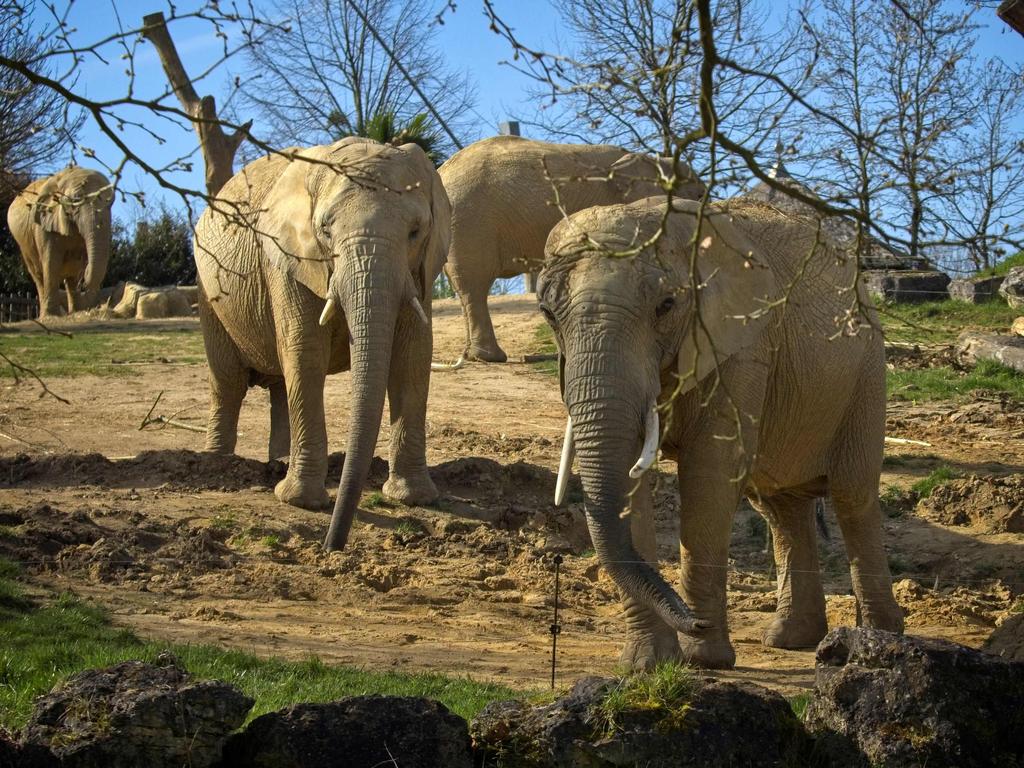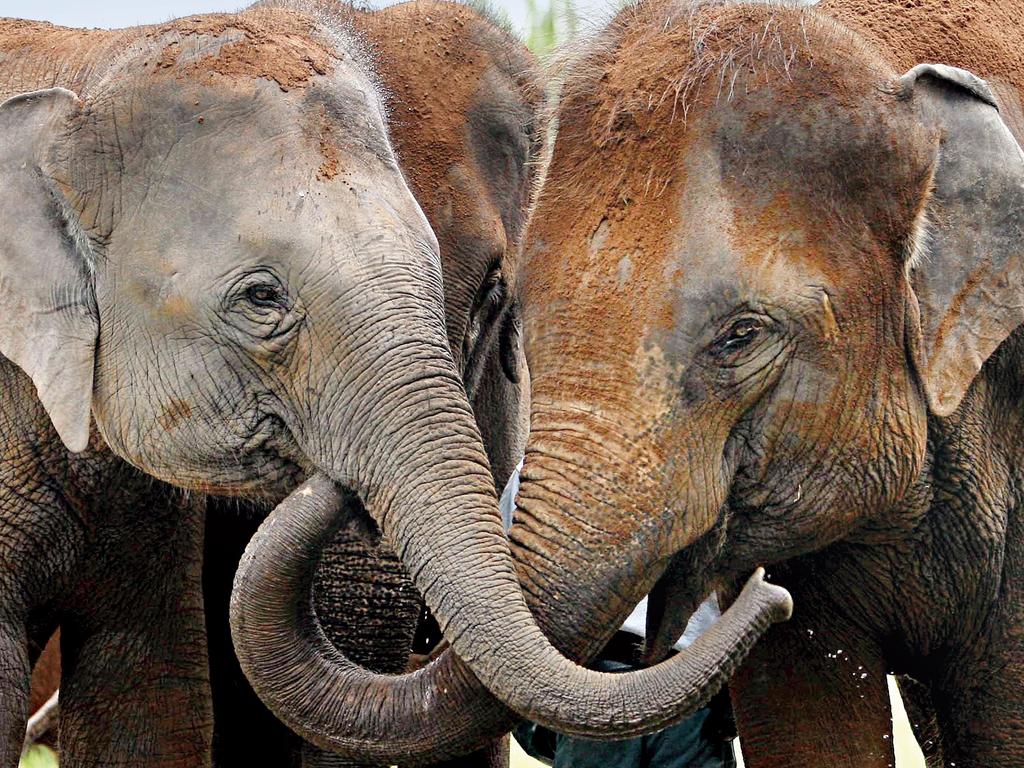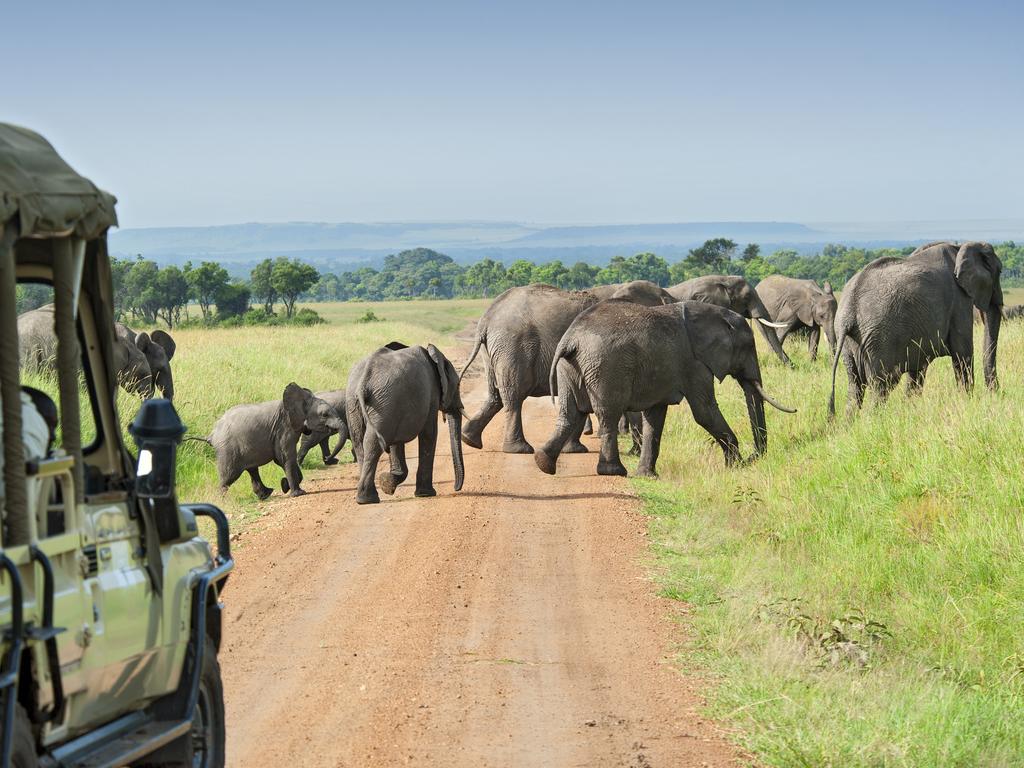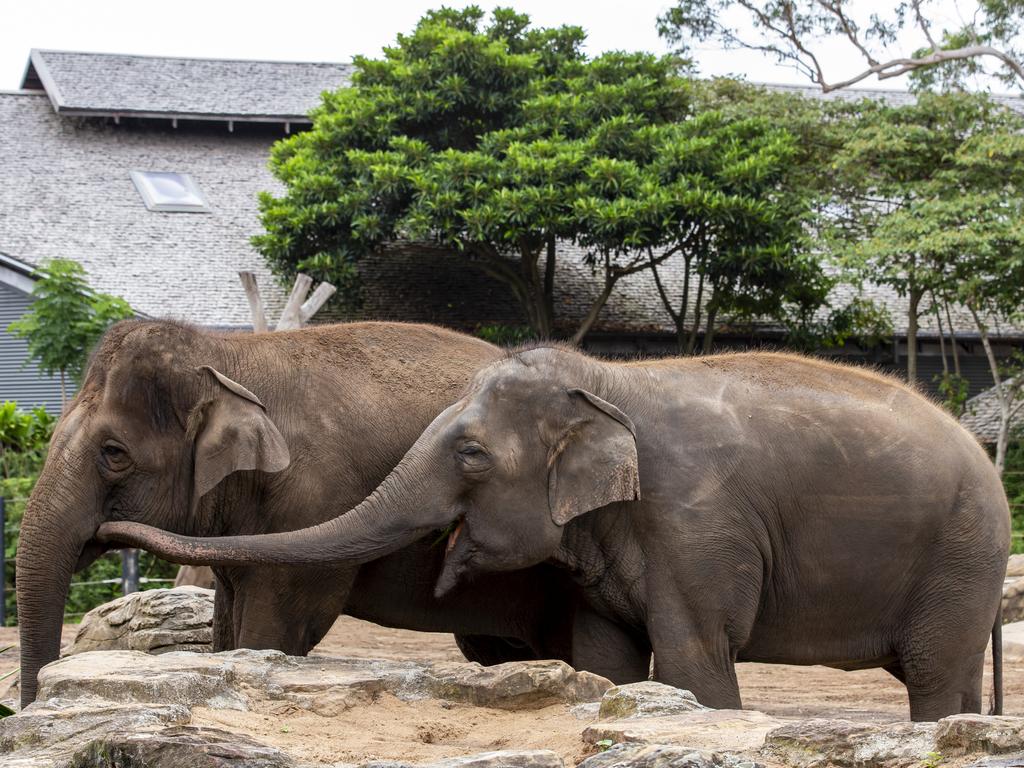Elephant greeting etiquette is complex, using multiple senses
Elephants do as much legwork as humans in order to greet each other, using multiple senses including sight, touch, smell and sound to communicate when they come together, new study finds

READING LEVEL: GREEN
Did you know that elephants are more like people than immediately meets the eye? Not only are humans and elephants both very social species, they each greet others in a variety of ways. People might say “hello,” “guten tag*,” “hola*,” “konnichiwa*” or “g’day.” They might also shake hands, bump fists, make a fist-and-palm gesture or press their hands together with a gentle head bow. They even might kiss on the cheek or hand. And sometimes they might give a nice big hug.

For elephants, greetings appear to be a similarly complex affair. A study based on observations of African Savannah elephants in the Jafuta Reserve in Zimbabwe* provides new insight into the visual, acoustic* and tactile* gestures they use in greetings, including how greetings differ depending on factors such as their sex and whether they are looking at each other.
“Elephants live in a so-called ‘fission-fusion*’ society, where they often separate and reunite, meeting after hours, days or months apart,” said University of Vienna cognitive* and behavioural biologist* Vesta Eleuteri, lead author of the study published this month in the journal Communications Biology.
Elephants, Earth’s largest land animals, are highly intelligent, with keen memory and problem-solving skills and sophisticated* communication.

Female elephants of different family groups might have strong social bonds with each other, forming “bond groups.” Previous studies in the wild reported that when these groups meet, the elephants engage in elaborate greeting ceremonies to advertise and strengthen their social bond.
Male elephants have weaker social bonds, and their greetings may serve more to ease possible “risky reunions” – a hostile* interaction. They greet mainly by smelling each other, reaching with their trunks, Ms Eleuteri added.
The study detailed around 20 gesture types displayed during greetings, showing that elephants combine these in specific ways, with call types such as rumbles, roars and trumpets. It also revealed how smell plays an important role in greetings, often involving peeing, pooping and secretions* from a unique elephant gland.
Elephants may greet by making gestures intended to be seen, like spreading the ears or showing their rump*, or with gestures producing distinct sounds like flapping the ears forward, or with tactile gestures involving touching the other elephant.


“We found that they select these visual, acoustic and tactile gestures by taking into account whether their greeting partner was looking at them or not, suggesting they’re aware of others’ visual perspectives,” Ms Eleuteri said. “They preferred using visual gestures when their partner was looking at them, while tactile ones when they were not.”
The new research built on previous studies of elephant greeting behaviour. The nine observed elephants – four females and five males – were “semi-captive,” freely roaming their natural environment during daytime and kept in stables at night.
Greetings used by the female elephants closely matched the behaviour of wild elephants. The greeting behaviour of the male elephants appeared to differ from their wild counterparts. Wild male elephants tend to be solitary, forming loose associations with other elephants.

The temporal gland*, midway between the eye and the ear, secretes a substance called “temporin”, which holds chemical information about an elephant’s identity or emotional and mating state. Elephants often use their trunks to check out the temporal glands of others.
Elephants might also wee or poop during greetings to express how they’re feeling, Ms Eleuteri said.
“Another option is that they do this due to the excitement of seeing each other,” she added. “But the fact that the elephants often moved their tails to the side or waggled their tails when urinating and defecating* suggests they may be inviting the recipients* to smell them. Maybe they don’t need to tell each other how they’re doing, as they can smell it.”

The study comes after one of Australia’s most famous zoos, Taronga Zoo Sydney, confirmed in April that its elephants were relocating. The elephant exhibit, a fan favourite at Taronga for 100 years, will farewell its final pair of Asian elephants, females Tang Mo and Pak Boon, who will leave for South Australia in mid-2025, to be in a larger and more social herd.
POLL
GLOSSARY
- guten tag: hello or good day in German
- hola: hello in Spanish
- konnichiwa: hello in Japanese
- Zimbabwe: landlocked republic in southern Africa that was once a British colony known as Rhodesia
- acoustic: relating to sound and hearing
- tactile: relating to the sense of touch
- fission: splitting, dividing, breaking into parts
- fusion: when two or more things come together and combine
- cognitive: relating to mental processes like thinking, reasoning, perceiving and remembering
- biologist: scientist who specialises in biology, the study of living things including plants, animals, cells and bacteria
- sophisticated: advanced, highly developed
- hostile: unfriendly, aggressive, reacting or behaving against something or someone
- secretions: discharge, emitting or releasing a substance from a cell or gland
- rump: the back-end of an animal
- temporal gland: modified or altered swear gland that produce an oily discharge
- defecating: pooping, having a bowel movement
- recipients: those who receive something, the receivers
EXTRA READING
Active animals show why they’re good sports
Zoo welcomes baby elephant to the herd
QUICK QUIZ
- The study was based on observations of which type of elephant?
- Where were they observed and in what country?
- As well as being Earth’s largest land animal, what other elephant attributes are listed?
- How many gesture types were detailed in the study and what were three call types identified?
- What was the difference between the semi-captive male and female behaviours and elephants in the wild?
LISTEN TO THIS STORY
CLASSROOM ACTIVITIES
1. How would elephants see us?
Imagine that you are an elephant that has studied the way that humans greet each other and socialise. You are learning about human behaviour for the first time and you don’t quite understand it yet. Write a description of what humans do, and why you think they do it, from your elephant point of view.
Time: allow at least 20 minutes to complete this activity
Curriculum Links: English
2. Extension
How do we benefit from understanding as much as we can about animal behaviour? List five benefits. Next to each item in your list, write sentences explaining the benefit in detail. Use examples from the story to help you.
Time: allow at least 20 minutes to complete this activity
Curriculum Links: English, Science
VCOP ACTIVITY
Imaginative dialogue
Imagine you were there during the research team’s time observing the elephants in Africa.
Create a conversation between two characters, including the scientist quoted in the article – you may need or want to include yourself as one of the characters. Don’t forget to try to use facts and details from the article to help make your dialogue as realistic as possible.
Go through your writing and highlight any punctuation you have used in green. Make sure you carefully check the punctuation used for the dialogue and ensure you have opened and closed the speaking in the correct places.

